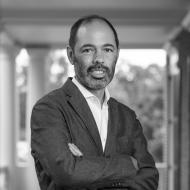
Active vs. Passive Funds: The Mutual Fund Shell Game
Are the fees for actively managed mutual funds worth the cost?
The longstanding debate between active versus passive management has largely focused on the U.S. mutual fund industry — understandably, since it is the largest in the world. And although that debate is far from settled, the consensus seems to be “it depends” — on an investor’s goals, time horizon and risk tolerance.
Research by Darden School of Business Professor Pedro Matos and colleagues suggests the manager is, in fact, one of the most critical factors in choosing between an active versus a passive fund, particularly in international markets. Matos is academic director of Darden’s Richard A. Mayo Center for Asset Management.
The researchers’ paper, “Indexing and Active Fund Management: International Evidence,” published in the Journal of Financial Economics in June, won a second place honorable mention in the S&P Dow Jones Indices SPIVA Research Awards. The research is the first to examine the active versus passive management question on a global scale.
Using two robust databases (Lipper and FactSet/LionShares), the study encompassed 24,492 mutual funds in 32 countries, with combined total net assets of more than $9.8 trillion, over the period 2002–10.
The findings revealed that as much as 20 percent of the world’s mutual funds are categorized as “active” but, in reality, yield results comparable to those of passive funds (i.e., index funds and exchange-traded funds). This generally frowned-upon practice of “hugging” the benchmark while charging active-management fees is known as “closet indexing.”
“It’s the same problem as mis-selling or mislabeling a product,” Matos says. “The customer needs to know what’s really in the product. We knew this was a concern, and has been for a couple decades, but our work shows closet indexing is more common than many perhaps thought — and more so outside the United States.”
Ultimately, this means “many investors are not getting what they pay for, and many managers are not doing the jobs they’re paid to do,” Matos explains.
The study defined a closet index fund as a fund labeled active but which had a less than 60 percent portfolio “active share,” or percentage of holdings that differ from the benchmark portfolio weights.
Besides revealing the prevalence of closet indexing, the research showed that in markets with more mutual funds explicitly labeled as index funds, those lower-cost alternatives drove down active fund fees and “put competitive pressure on them to be truly active.”
This study has potentially significant implications for the mutual fund industry and how it’s regulated. Accordingly, it’s garnered significant media attention worldwide, including headlines like “Closet Tracking: Gigantic Mis-Selling Phenomenon” (Financial Times, November 2015). In February 2016, the study was also quoted in European Securities and Markets Authority (ESMA) supervisory work on potential closet index tracking in Europe.
The research ignited special interest in Sweden — with a mutual fund industry that may consist of 56 percent closet indexers — where a group of smaller investors filed a class-action lawsuit against one of the country’s main mutual fund sellers. Matos believes this research could put new pressure on the Swedish mutual fund industry and others like it; similar to many European counterparts, it suffers from too much coziness with commercial banking, he explains, making it difficult for low-fee passive funds to enter the market and increase competition.
Canada is another country that sees some of the most closet indexing, which comprises about 37 percent of its mutual funds. The Ontario Securities Commission — the Canadian equivalent to the U.S. Securities and Exchange Commission — launched an investigation into the practice, as reported by The Globe and Mail on 2 March: “OSC to Examine Actively Managed Funds.”
“When only a few large banks dominate the market and are also a ‘one-stop-shop’ for customers’ financial services, there’s no incentive to introduce low-fee index funds,” he says. “By contrast, in the U.S., there’s been more separation of the commercial bank and mutual fund industries as a result of the 1933 Glass-Steagall Banking Act — and therefore, more competition.”
Consequently, Matos adds, “U.S. mutual funds remain some of the cheapest and best investments in the world, and closet indexing exists but is less common,” comprising about 15 percent of the mutual fund market.
What’s the answer?
“Increasing disclosure requirements” is the most obvious solution, Matos says. The reason closet-indexers fly largely under the radar is because of the unavailability of this information to investors.
“In the prospectus or marketing materials, mutual fund companies should have to give information about active share alongside fees,” Matos says. In this way, closet indexers will be more easily spotted, and the practice can be edged out of the industry.
The purpose of this study, Matos explains, was to survey and “shine a light” on the situation, which he compares to the pharmaceutical industry.
“Index funds are like generic drugs, and if there’s good evidence that they perform as well as the brand drug — active funds — in certain cases, investors should strongly consider switching to the generic,” he says.
Of course, some active funds truly are active and produce superior performance.
“The key is telling the difference,” Matos says.
Pedro Matos is co-author of “Indexing and Active Fund Management: International Evidence,” published in the Journal of Financial Economics (Volume 120, No.3, 2016), with Martijn Cremers, Miguel A. Ferreira and Laura T. Starks.














